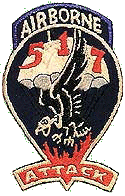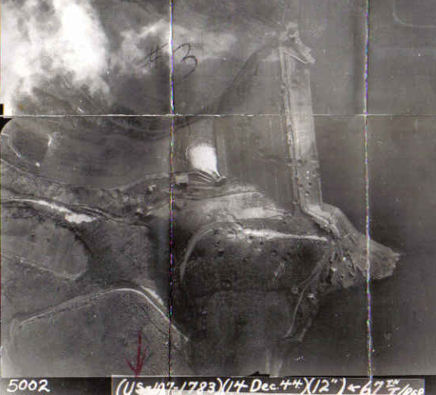INFANTRY REGIMENTAL COMBAT TEAM (SEPARATE)
IN THE VICINITY OF BERGSTEIN, GERMANY
4-8 FEBRUARY 1945. (RHINELAND CAMPAIGN)

By Capt. Roland L. Gohmert
INTRODUCTION
This monograph is the account of the 3rd Battalion, 517th Parachute Combat Team, in an attack on defenses of the Roer River Dam area in the vicinity of Bergstein, Germany, beginning 4 February 1945.
In order that the reader may appreciate fully the situation which confronted the subject battalion, it will be necessary to discuss briefly two subjects; (a) events leading up to the operation, and (b) organization and combat history of the unit involved.
In October 1944, the Allied armies in western Europe were generally deployed against the main defenses of the Siegfried Line, and had made major penetrations in the Aachen area. Hitler's gates thus having been opened, the Roer River with its mountainous, rugged banks was the only major barrier to the gently rolling plains which beckoned Allied armor to the west bank of the Rhine. Aggravating the seriousness of this barrier were four dams on the Roer, which if blown, would put at flood stage all of the river lying north of the dam sites. Thus, any attacking force from the First or Ninth Armies which might be across the river, could be isolated and destroyed. (1)
Dam number two, the Schwammenauel Dam, directly west of Hasenfeld, offered by far the greatest threat to military operations. It was calculated that two-thirds destruction of the dam would cause the river to rise twenty-five to thirty feet within six hours at Düren, and would increase the width at that point to a mile and a half for a period of at least two days. The velocity of the water would be increased from five to sixteen feet per second. If this dam should be blown, in conjunction with the destruction of another dam upstream, it was estimated that two full weeks would be required to restore any communications across the river. (2)
The major effort of First Army was being made try VII Corps, on its north flank, into the area in danger of being flooded. Therefore, V Corps to the south, was assigned the mission of capturing the dam. (3) This mission, in turn, was assigned to the 28th Infantry Division, which on 2 November jumped off from the Hurtgen Forest with Schmidt as its initial objective. Schmidt lies on a high ridge overlooking the dam, some 2,000 yards to the southeast. At 1600 hours on 3 November, the 112th Infantry entered the town of Schmidt, but was unable to hold against heavy armored attacks and fire from the Brandenberg - Bergstein ridge to the north. On the following day the regiment was forced to withdraw to the west bank of the Kall River after extremely heavy casualties. (4)
On 19 November, the 8th Infantry Division took over the 28th Division sector and attacked northeast toward Hürtgen and Kleinhau, but made no material gains. On this same day, the Air Force dropped thirty-two tons of bombs on Bergstein without apparent effect on the defenses of that area. It was now realized that the Brandenberg - Bergstein ridge dominated all the surrounding terrain, and that it could not be neutralized by air or artillery. Consequently, on 1 December, V Corps launched an offensive to capture the ridge, and on 3 December, after three heavy air strikes, CCR of the 5th Armored Division, attached to the 8th Infantry Division, took Brandenberg. On 5 December, CCR which included the 2nd Ranger Battalion, supported by the IX TAC, 8th Division Artillery and 32nd Field Artillery Brigade, captured Bergstein. (5)
On 8 December, the RAF dropped 797 tons of bombs on the dams in an effort to unleash the floods so that eastward operations might begin without further threat of floods, after the water had subsided. However, aerial photos showed that no material damage was done by the bombing. (6)

Aerial photo Schwammenauel Dam, 14 Dec. 1944
One can clearly see the bomb craters. (US Army photo)
In an all out ground effort to remove this thorn from the sides of the impatient First and Ninth Armies, V Corps, reinforced by the 78th and 2nd Divisions, launched another attack on the dam on 13 December. This attack was still in progress when, after slight gains, on 16 December the German launched his great Ardennes Counteroffensive. Its right flank having been exposed by the German penetrations, the V Corps offensive to the east was forced to halt temporarily. (7)
"Had the Schmidt operation succeeded, First Army might have reached the Rhine in November or early December and the counteroffensive in the Ardennes might conceivably never have been launched." (8)

